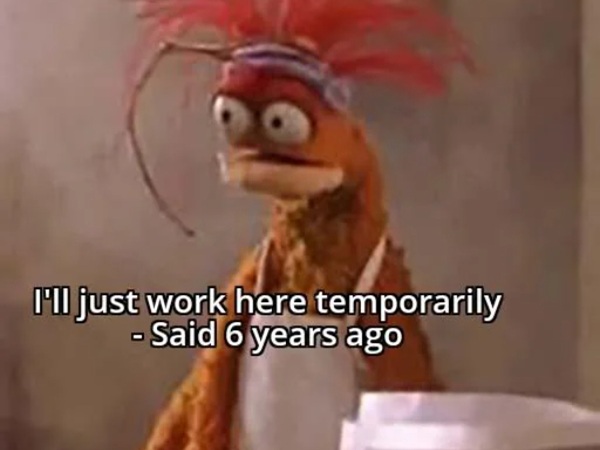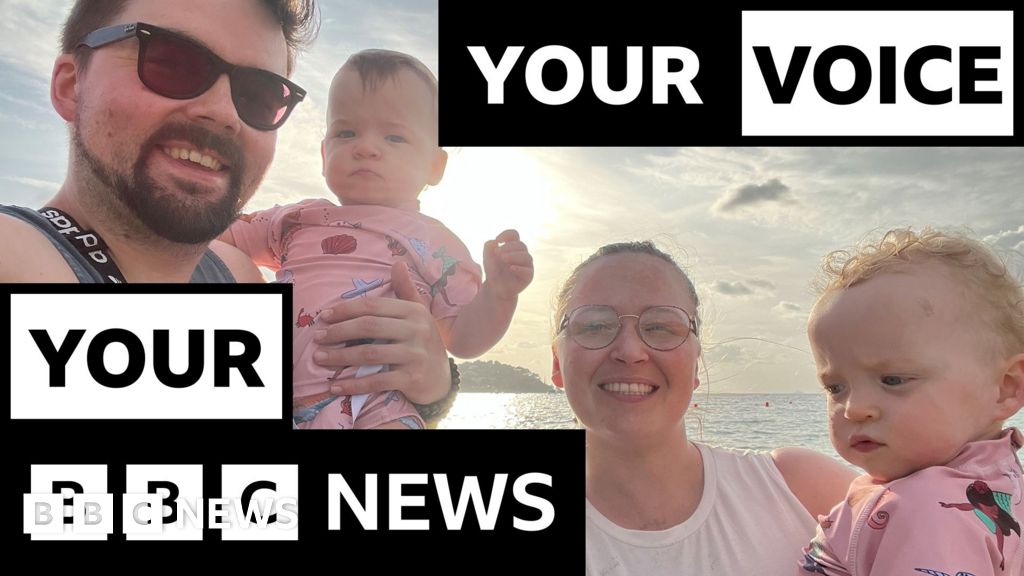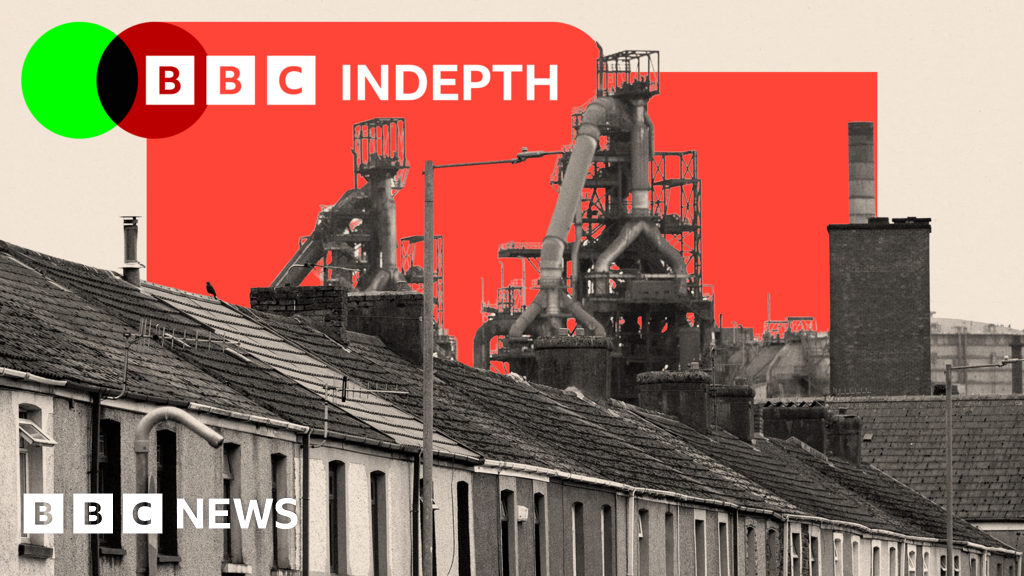Southwest Florida’s housing market is undergoing a material home price correction—here’s why
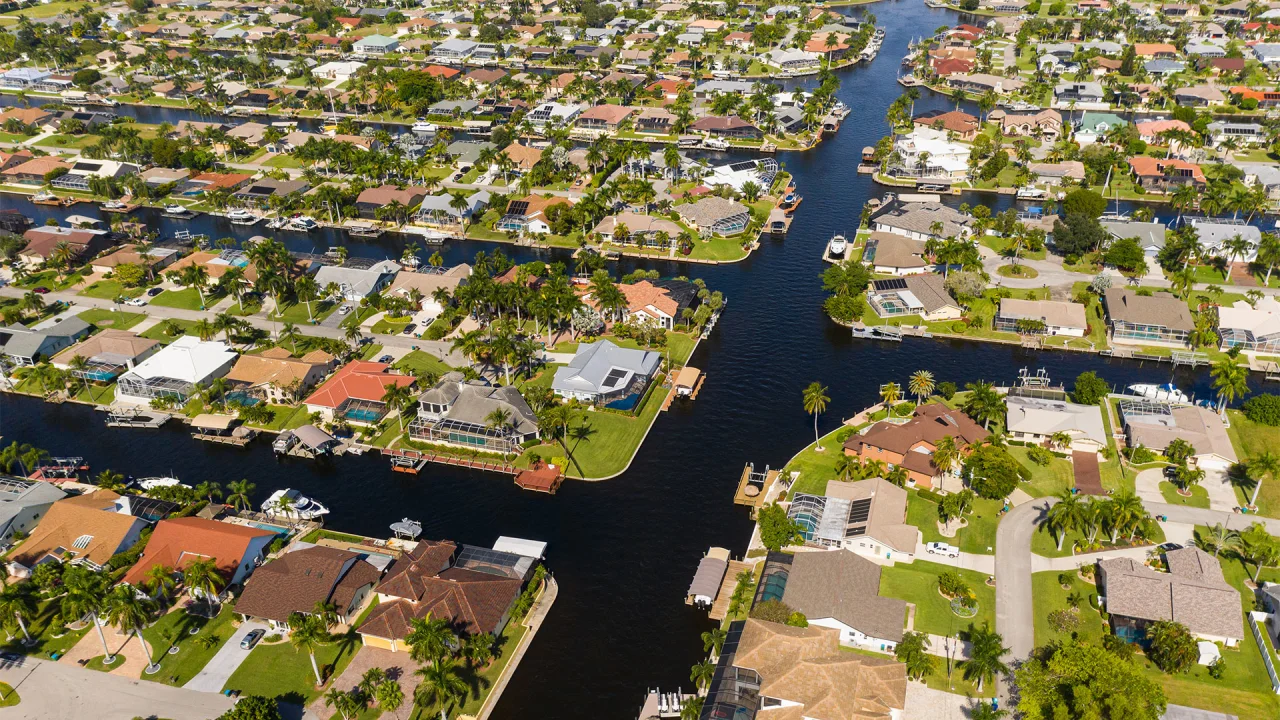
Want more housing market stories from Lance Lambert’s ResiClub in your inbox? Subscribe to the ResiClub newsletter.
Back in June 2022, this home at 1137 Treasure Cay Ct in Punta Gorda, FL, was purchased for $985,000. Just one month later, home prices in the Punta Gorda metro area peaked, and the market slipped into what ResiClub calls “correction mode.”
In April 2025, the homeowner listed the property for sale at $1,150,000, and the price has since been cut six times, with the most recent asking price at $899,000. The home just went “pending,” though it’ll be a few weeks before we know the final sale price.
If the home ultimately sells for $899,000—8.7% below its June 2022 purchase price—the seller might consider themselves lucky. Bank of America’s AVM model (although I take those with a big grain of salt) estimates the home’s value at $721,615, and ResiClub’s analysis of the Zillow Home Value Index shows that home prices in the Punta Gorda metro area are down -18.6% since the market’s July 2022 peak.
As we’ve closely documented for ResiClub PRO members for quite some time (here’s our feature on just Punta Gorda), Southwest Florida is the weakest regional chunk of the U.S. housing market. While the Austin, Texas metro area has seen a larger overall price drop this cycle (-23% since its 2022 peak), it isn’t experiencing year-over-year price declines as steep as those currently seen in Southwest Florida markets like Cape Coral and Punta Gorda right now.
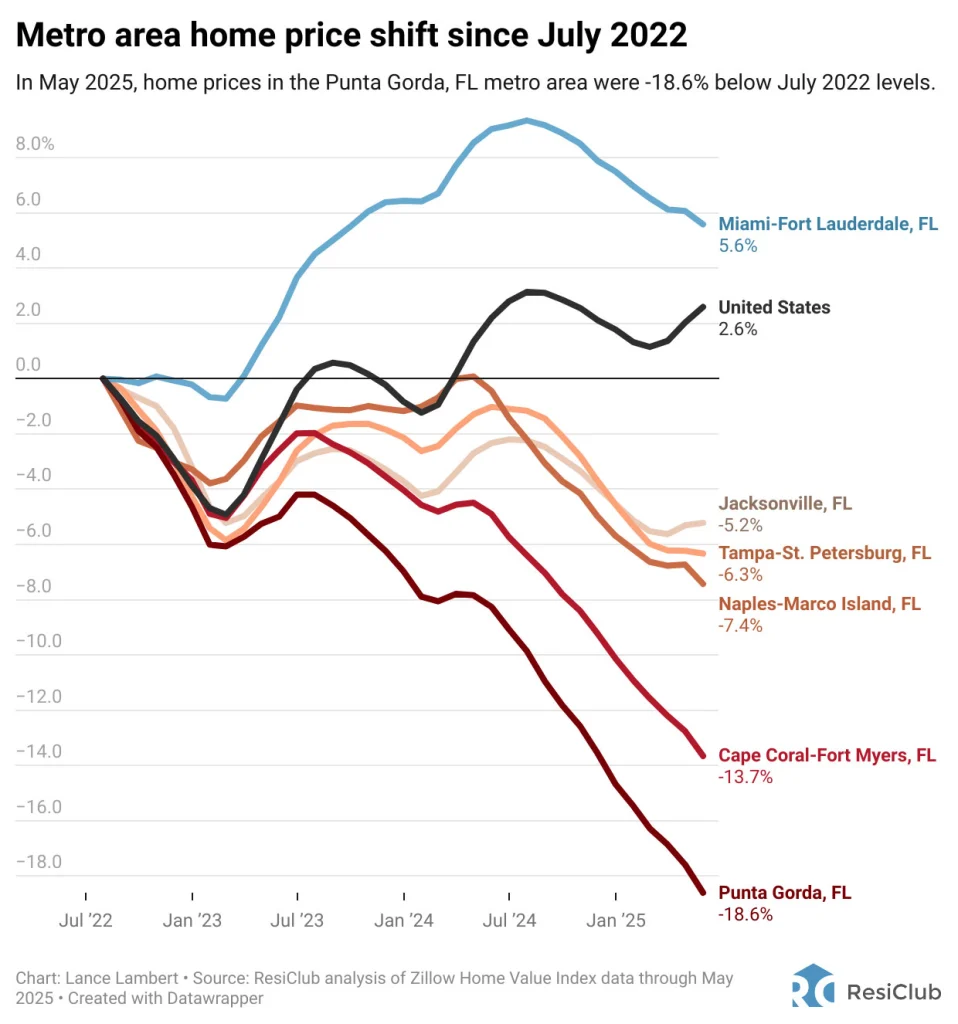
We should point out that the weakness in Southwest Florida—and Florida more broadly—is currently more pronounced in the condo market than in the single-family market. Take Punta Gorda, for example: Single-family home prices are down -13.6% from their 2022 peak, while condo prices there have fallen -20.4%.
Heading forward, one big question is: Have home prices fallen enough in markets like Punta Gorda and Cape Coral to get the attention of homebuyers, mom-and-pop single-family investors, and single-family acquisition capital? That’s something we’ll do some reporting on in the coming weeks for ResiClub PRO members.
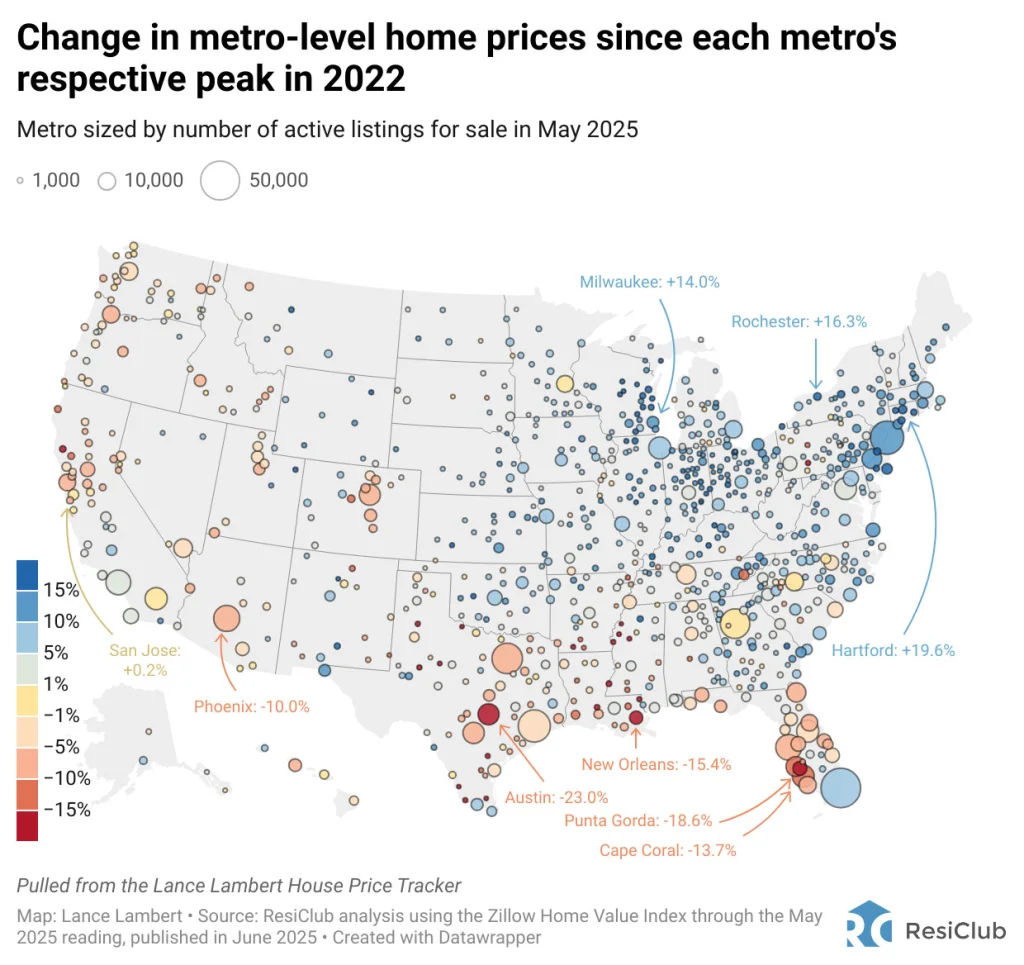
What’s the story with Florida—in particular SWFL—right now?
As ResiClub has previously discussed, Florida’s particularly intense overheating during the Pandemic Housing Boom is the key reason for its pricing vulnerability right now. While U.S. home prices rose +41% between March 2020 and June 2022, Florida home prices surged +51% over the same period. It just takes a big enough shift in the supply-demand equilibrium for that vulnerability to manifest into falling home prices.
Why has the supply-demand equilibrium in Florida markets recently shifted further toward buyers than in the rest of the nation? As ResiClub has previously covered, it’s a combination of 5 factors:
1) The migration surge to Florida fizzled out
The Pandemic Housing Boom’s domestic migration surge to Florida has fizzled out. Indeed, Florida saw net domestic migration of +64K in 2024, compared to +314K in 2022. Without that higher influx of deep-pocketed buyers and second homebuyers from up north, Florida home prices have had to rely more on local incomes.
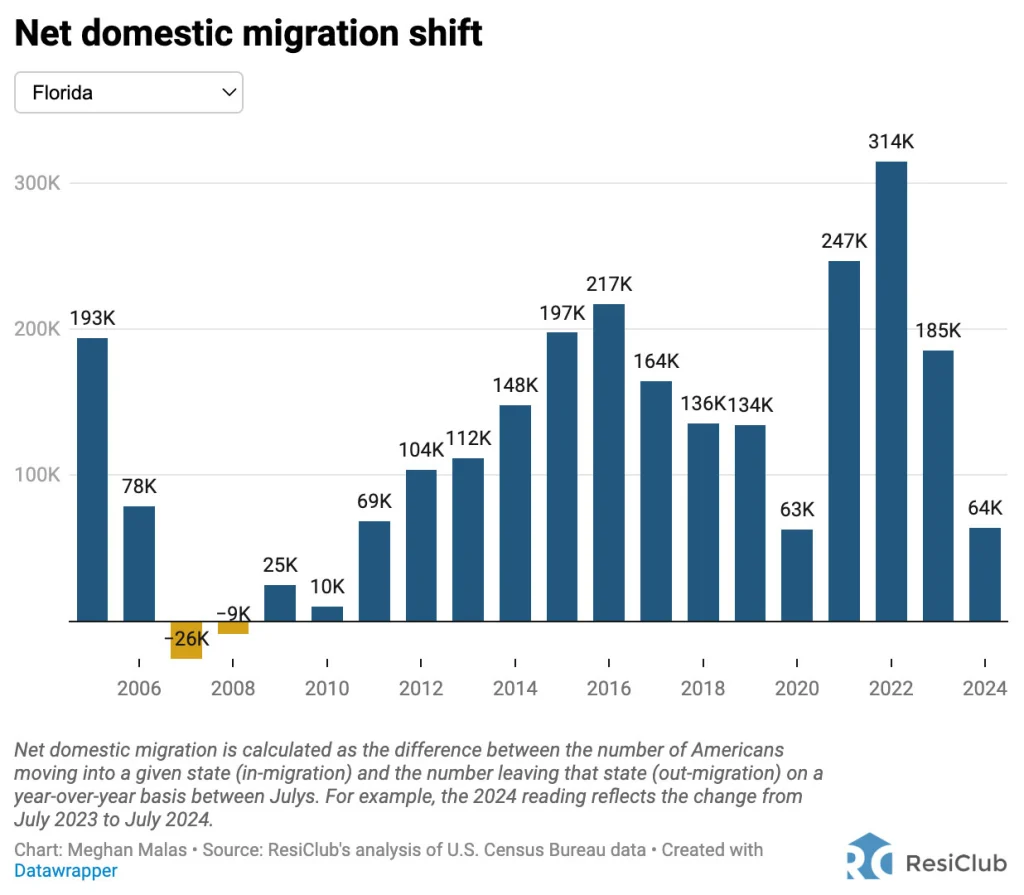
2) Surfside condo fallout
Following the Surfside condo collapse in June 2021, which killed 98 people, Florida passed new structural safety rules, requiring more inspections and additional funds for repairs to be set aside by the end of 2024. That has led to Florida HOAs issuing sky-high special assessments and monthly HOA fee increases to cover these costs. This has had a greater impact on older coastal Florida condo buildings.
3) Hurricane Ian spurred a softening
Hurricane Ian spurred a greater SWFL softening. Markets like Cape Coral and Punta Gorda, which were hard-hit by Hurricane Ian in September 2022, saw thousands of damaged homes, and the subsequent need for renovations. According to the National Oceanic and Atmospheric Administration, Hurricane Ian caused an estimated $112.9 billion worth of total damage, making Ian the third-costliest U.S. hurricane on record. This combination of increased housing supply for sale (i.e., the damaged homes), coupled with strained demand (the result of spiked home prices), as well as spiked mortgage rates, higher insurance premiums, and higher HOAs has translated into market softening across much of Southwest Florida.
4) New construction supply elasticity
Unlike many housing markets in the Northeast and Midwest, Florida has a higher level of homebuilding and multifamily construction. As new supply enters the market in this affordability-strained environment, builders are using bigger affordability adjustments—such as mortgage rate buydowns—where needed. This has helped cool the resale market by drawing in some buyers who might have otherwise purchased existing homes. As a result, inventory of existing homes is building up, making Florida one of the few housing markets where active listings now exceed pre-pandemic 2019 levels.
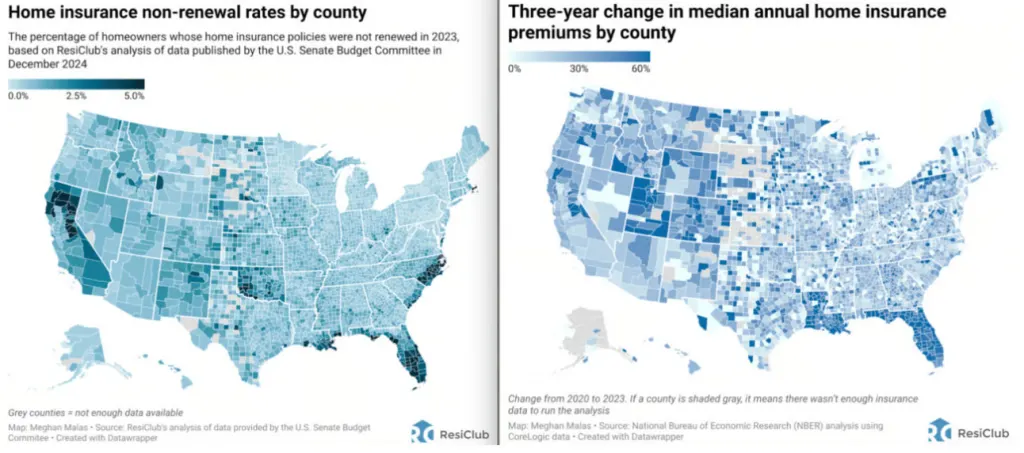
5) Home insurance shocks
Over the past three years, the median annual U.S. home insurance premium has jumped 33%, but Florida homeowners have been hit even harder. The surge in Florida home insurance rates is partly driven by rising replacement costs—home prices and construction costs soared during the boom—and partly by increased hurricane risks and insurance payouts. Florida’s sharp rise in insurance costs, combined with one of the biggest home price increases during the Pandemic Housing Boom, has led to one of the biggest housing affordability deteriorations. (ResiClub PRO members can find our latest county-level home insurance report here.)
What's Your Reaction?
 Like
0
Like
0
 Dislike
0
Dislike
0
 Love
0
Love
0
 Funny
0
Funny
0
 Angry
0
Angry
0
 Sad
0
Sad
0
 Wow
0
Wow
0







































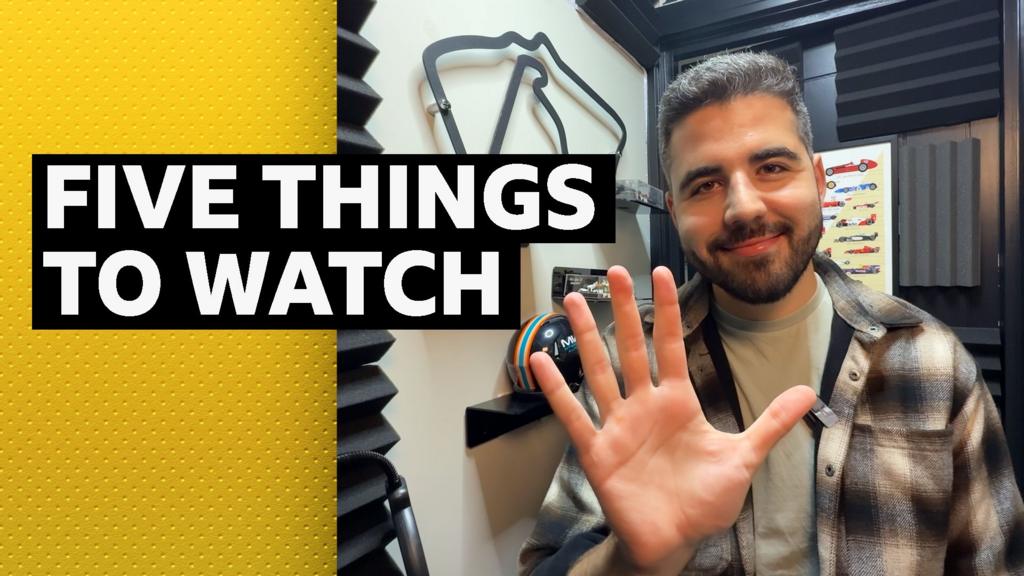















![Walter Boys Season 2 Finale Delivers Not One, But Two Cliffhangers — Is [Spoiler] Dead?](https://tvline.com/wp-content/uploads/2025/08/my-life-of-the-wlater-boys-season-2-finale_33d3b0.jpg?#)








